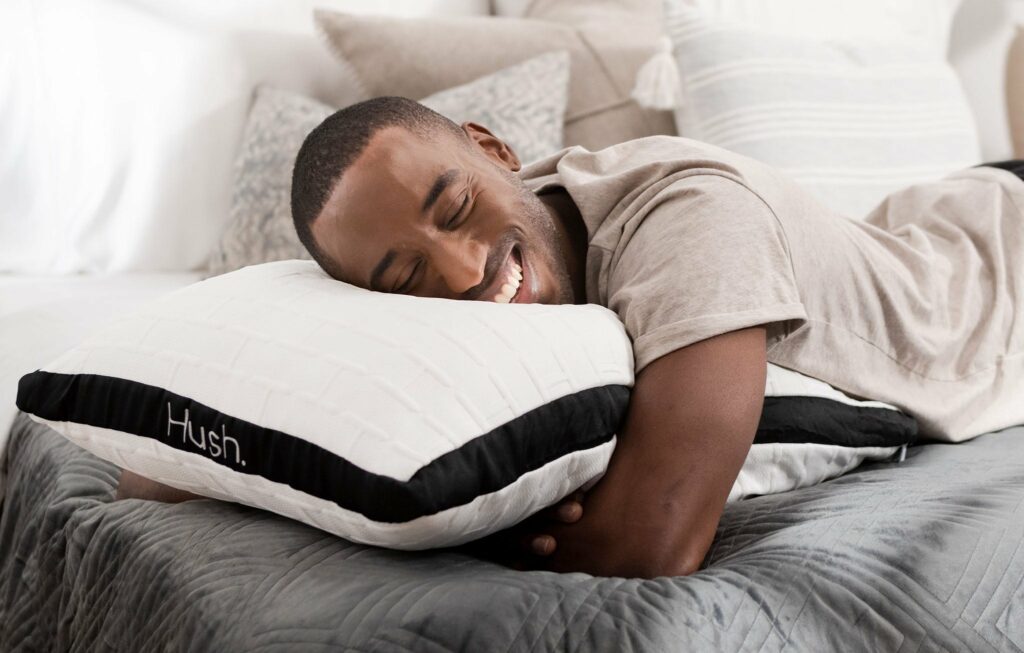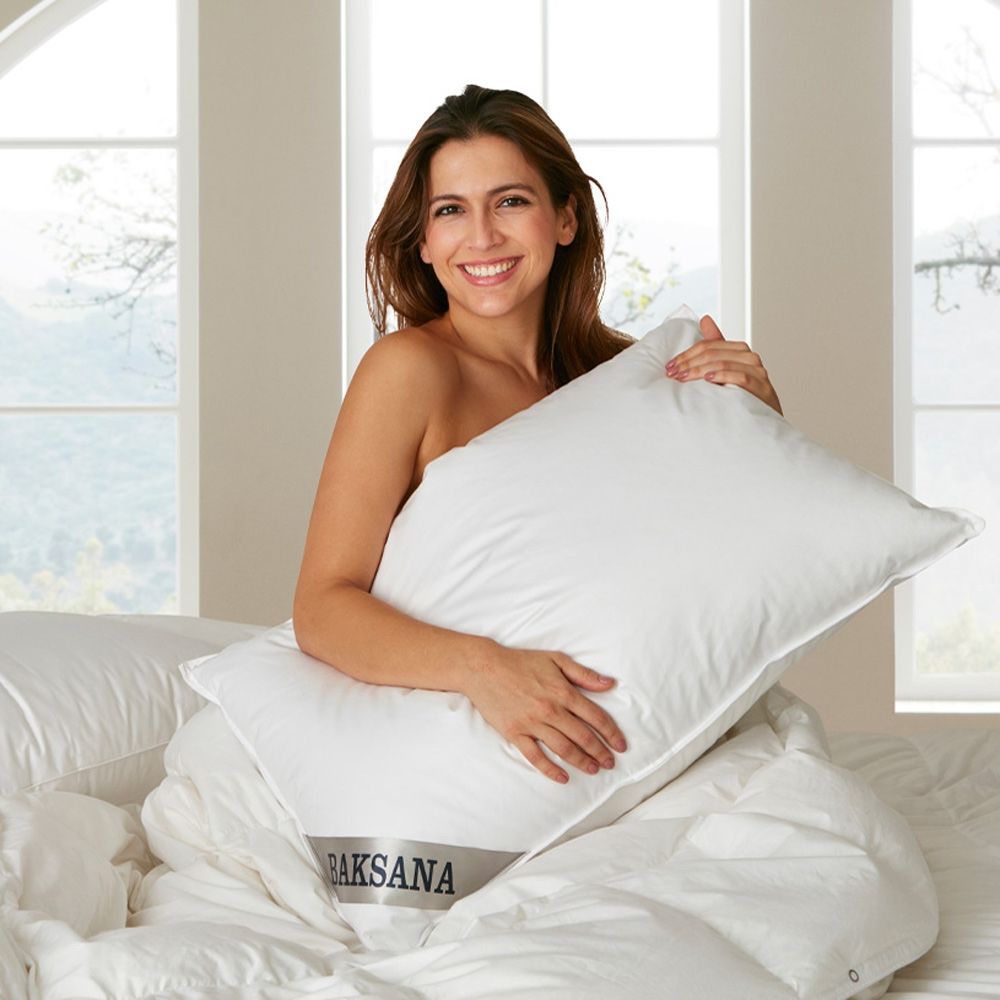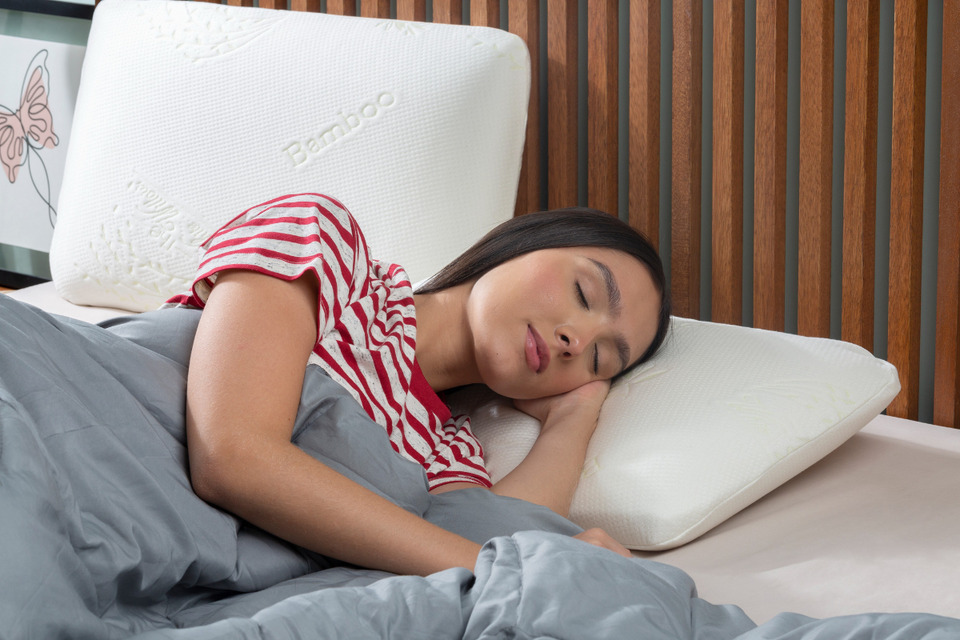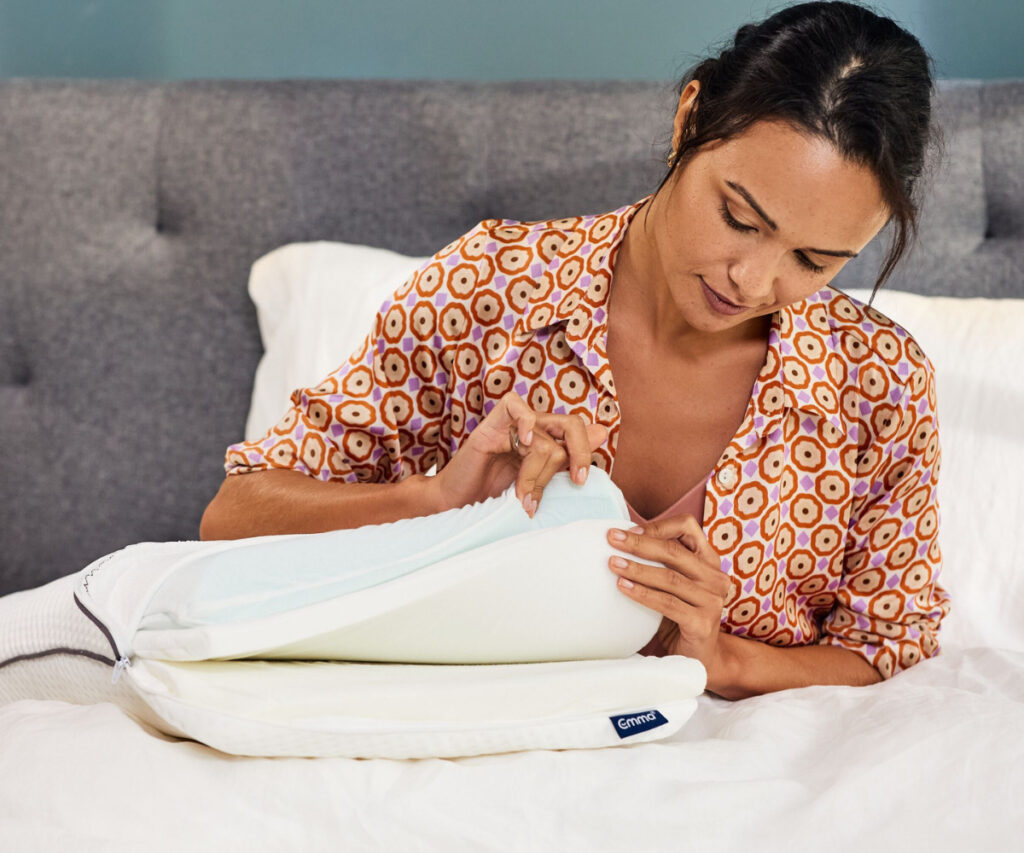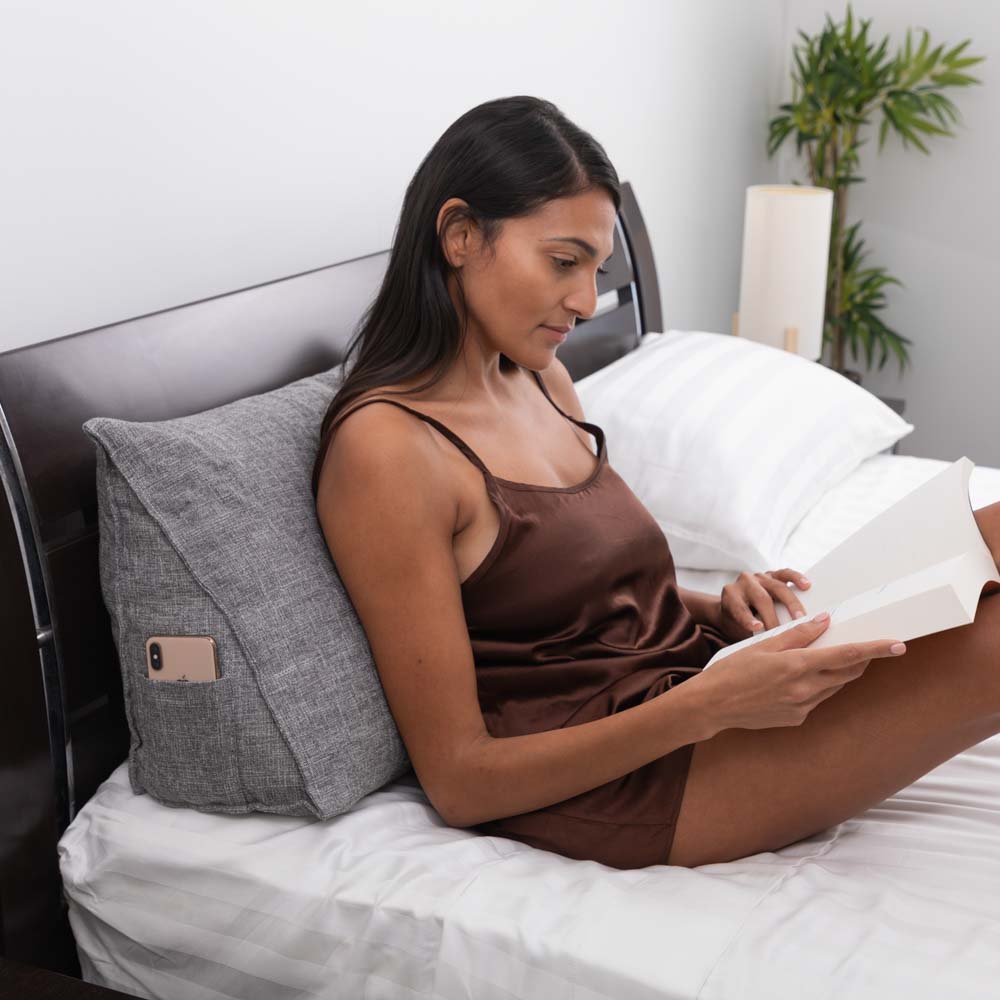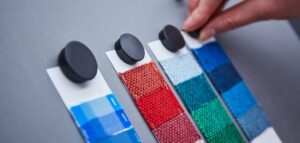What are Synthetic Pillows and Hollowfibre Pillows?
Synthetic pillows are often referred to as hollowfibre pillows, microfibre pillows or polyester pillows – these are all man-made fillings and are the cheapest pillow types
The chemical polyester synthetic pillow fillingmanufacturing process creates threads which are then spun into denser filling to use to stuff pillows, duvets, cushions and toys. Polyester synthetic pillows are usually simply constructed with a cotton, or polyester slip (the outside of a pillow) with spiral fibre, microfibre or hollowfibre inside.
These pillows are great if you’re on a budget or have bad allergies but are the worst long-term pillow investment and have the least satisfaction rating amongst all our reviewers. Some wash well but others will clump after washing and make you hot at night. You’re unlikely to fall in love with a synthetic pillow, but they’re very cost-effective if you just want to put your head on something other than a mattress.
- Pros: Cheap, lightweight, good for those with allergies, easy to care for, easy to bend and scrunch to get required height, not noisy
- Cons: Have the shortest life-span (6 months to 2 years), flatten quite quickly, retain heat and moisture, plus the filling can clump and get out of shape
What are Down pillows?
‘Down’ is the softer under-feathers which ducks and geese use for insulation, it is usually considerably softer than the outer feathers, the quills are normally very thin and pliable unlike outer feathers which can be tough. Often, down is sourced from birds that generally live in cold climates (Scandinavia, Russia etc) as their down will tend to be thickest and softest.
In order to be considered as a down pillow, the filling needs to be at least 75% down. Often manufacturers will use other, cheaper material such as feathers to make up the rest. When this is the case this material is often inside an inner core within the pillow which is then surrounded by down in order to give external softness.
Down pillows are usually very smooth with no lumps and although the down can occasionally escape from the pillow cover, it usually wont poke you like feathers. As down is not cheap, down pillows are usually amongst the most expensive and luxurious.
Goose down pillows or duck down pillows?
Goose down pillows are often considered more luxurious than duck down due the larger tufts of down which provides slightly more insulation. They are usually more expensive pillows as well. Basically with down pillows, the more you pay the better quality down you get. Geese have more down than ducks and the further north the goose comes from, the warmer the down will be. The price tag goes up as well, but you can feel the difference.
Make sure you buy from a reputable down pillow retailer such as John Lewis, The White Company, Soak and Sleep etc. We’ve checked their animal welfare policies in the past and they should all adhere to strict guidelines on ethically sourcing down. They should also sell down which has been properly washed, so that it is fresh and soft and minimises any allergies – note allergies are not caused by down and feathers but the dust mites attracted to dust in the pillows.
Also make sure the pillow cover is high thread cotton so that no downy tufts and quills escape. That sorted, you won’t regret buying a down pillow – they’re my personal favourite (ed. Suzie!)
Pillow advisor summary: Although a bit pricey, nothing feels as soft and luxurious as a down pillow. They aren’t ideal where support or neck pain relief is required – quite often you may need another pillow underneath – but they won’t disappoint in almost all other circumstances.
- Pros: Tend to make the softest pillows, nice and light, cool an airy, easy to shape, long lasting, quiet
- Cons: Feathers can sometimes poke through the cover (though usually not spiky like feathers), do not offer a lot of support or height – not great for side sleepers, can be expensive, will need occasional fluffing and shaking to get back into shape, not ideal for allergy sufferers unless the down has been correctly processed.
What are Feather pillows?
A feather pillow is made using a ‘feather-proof’ outer cover (to stop the feather quills poking through) and is filled with wing and back feathers of duck and geese. Feathers alone can be a little rough and so a feather pillow will usually contain a small percentage of down in order to soften it up a little.
If you’re buying a feather pillow, the quality of the feathers used and the cover are especially important. A good quality feather pillow will smell fresh and will be stuffed with washed and sorted high grade feathers, less likely to contain dust and cause allergies.
The most important thing to consider when buying feather pillows is to make sure that the cover is made from good quality cotton with a densely woven high thread count – a thread count of more than 240gsm (the higher the better) should keep dust mites out and help keep spiky feather quills in. In other words will make sure that you get a better night’s sleep on your pillow.
A down / feather mix pillow will always be more comfortable – giving you the softness of down and the support of feathers.
Pillow advisor summary: Used to be popular but 100% feather pillows are not particularly recommended unless you sleep mostly on your back or front and if feather pillows are your thing.
- Pros: Usually inexpensive, soft, easy to shape, durable – have a good lifespan
- Cons: The feather quills can quite often poke through even the toughest cover – they’re spiky! Do not offer a lot of support or height – not great for side sleepers, can be a bit noisy, will need regular fluffing and shaking to get back into shape, not great for allergy sufferers unless it’s super quality and you use a pillow protector.
What are Latex pillows?
Latex is a natural polymer derived from plants and trees although it can also be synthesised. When latex is used as a pillow filling, it is foamed to create a matrix of tiny inter-connected bubbles which give it bounce and spring. This latex sponge is very reactive to pressure, but unlike memory foam it has instant bounce-back so is very good for back and neck problems as latex relieves pressure when sleeping (see video below)
It is generally sold as a memory foam competitor though in reality it offers different properties and a different experience to memory foam. The good news is that much latex is now produced sustainably, from latex rubber tree plantations, so is potentially more environmentally friendly pillow filling option than memory foam or synthetic fillings.
Generally latex pillows don’t give that ‘sinking in feeling’ you can get with memory foam, it also has better moisture and heat dissipation properties than memory foam. Latex pillows are also good as orthopaedic pillows as they offer great support for neck pain and are also great for allergy sufferers as they prohibit dust mites. The downside is that you can’t shape them to fit, you’re stuck with the fixed height.
Latex pillows have some of the highest satisfaction ratings of all pillows and can offer you a very comfortable pain-free night, but make sure you buy one of the right height for you. Not for you if you like a lighter, mouldable pillow though.
- Pros: Very long lasting natural material, cooler and more airy than memory foam, shapes itself to the head and neck. Soft and supportive offering effective pressure relief, holds its shape well, quiet
- Cons: Can be expensive, heavy, fixed shape and height so if a pillow is not right you can’t adjust it, can smell strange to begin with.
What is Memory Foam?
Memory foam, also referred to as visco elastic foam, is foamed polyurethane with additional chemicals which increase its density and viscosity – sounds lovely doesn’t it?! The foam bubbles or ‘cells’ are open, effectively creating a matrix through which air can move. Memory foam was first discovered under a contract by NASA who were looking into new materials to increase cushion safety.
Memory foam’s key characteristics are that at high densities it reacts to body heat, conforming and moulding itself to the body over a couple of minutes, at low densities foam pillows are pressure sensitive and will react quickly to body shape.
Memory Foam Pillows using this material are either shaped like a normal pillow or are contoured to fit more closely to the head and neck. Because of its properties, memory foam pillows are often sold as offering effective pressure relief and unparallelled comfort. Many users do rave about them although in reality, they are not to everyone’s taste. Because memory foam is relatively dense, the height is relatively fixed so it is not adaptable to different height requirements, it can also be quite warm as it doesn’t offer much air flow.
- Pros: Offers good support and pain relief, is soft and smooth without lumps, can be contoured to closely match head and neck, quiet, good durability and easy to look after, those people who get on with memory foam pillows LOVE them.
- Cons: If you tend to move around during your sleep or swap between sleeping on your back, side or front, then the fixed height won’t suit you, it can initially be a bit smelly, heavy, not very good ventilation so can be hot, relatively expensive.
How to compare different types of Pillows
Pillows can be made with wool, silk, buckwheat, bamboo, latex and other materials, but in the world the vast majority of pillows are either synthetic, or down / feather. The four most popular pillow fillings are:
- Polyester, Hollowfibre pillows: General purpose, good all-rounder synthetic pillow
- Down pillows: Made from very fluffy under-feathers, super soft but can be expensive
- Feather pillows: Made from feathers (duh!), fairly soft and supportive but can be noisy and spiky
- Memory foam pillows: Made from Nasa thermo and pressure-reactive foam, very supportive, like Marmite: some people love them, some people hate them
We’ve put together this pillow comparison chart to enable you to compare the differences between the main types of pillow.
Once you’ve decided on what sort of pillow is for you, take a look at our reviews of the best pillows to find your ideal pillow.
Pillow comparison chart
| Polyester, Hollowfibre, Synthetic pillows | Feather pillows | Down pillows | Memory foam pillows | |
|---|---|---|---|---|
| Price | £ | ££ | ££££ | £££ |
| Versatility | **** | *** | ** | *** |
| Durability | * | ***** | **** | *** |
| Maintenance | **** | *** | *** | ***** |
| Softness | *** | **** | ***** | ** |
| Firmness | *** | ** | ** | **** |
| Moldability | **** | ***** | ***** | ** |
| Support | *** | ** | ** | **** |
| Pain reduction | ** | ** | ** | **** |
| Sleep on back | ** | ** | ** | *** |
| Sleep on side | ** | *** | *** | *** |
| Sleep on front | **** | **** | ***** | ** |
| Weight (*=light) | ** | *** | * | ***** |
| Air flow | *** | *** | *** | * |
| Coolness | **** | *** | **** | * |
| For allergies | ***** | ** | *** | **** |
What are Wool pillows?
Wool pillows are natural, anti-allergenic, supportive, warm and cool.
Increasing in popularity, wool is a more environmentally friendly option than man-made, synthetic fillings which are made from polyester. These polyester fillings are all made through a using a chemical reaction involving coal, petroleum, air and water. Would you ever have guessed there was petrol in your bedding?
Environmentally friendly
Fossil-fuel-free, wool is excellent at repelling dust mites – it is naturally anti-allergenic, as long as you’re not allergic to wool itself! – and brilliant at absorbing moisture. A sheep’s fleece insulates the sheep’s body, helping to maintain a constant body temperature by providing protection from the extremes of cold in winter and heat in summer. This all means that wool is a fantastic material to use for bedding, helping to keep you warm in winter and cool in summer.
Temperature-regulating: good for little children
Wool can therefore be a great choice for people who get hot heads in bed: toddlers, children and anyone going through the menopause. Because the natural fibres absorb moisture, you also don’t get a sweaty patch on your pillow as you might do with a polyester / synthetic pillow. So for little ones who can’t regulate their own body temperature well, wool is the best choice for a children’s pillow or toddler’s pillow. This ability to regulate humidity also means, bizarrely, that wool is a really good option if you live in hotter, tropical countries too.
Heavier pillows
Naturally much heavier, and firmer than synthetic pillows, or down and feather pillows, a wool pillow stays where you put it and doesn’t end up half way down the bed. So, for this reason too they work well as children’s pillows. They’re supportive but flatter which is good for front sleepers or those toddlers who mainly sleep on their tummies or sides. Alternatively, you could double-up your pillows if you need a bit more support on your back or side.
Recyclable and fully biodegradable, wool pillows definitely meet any ‘green’ sustainability criteria. And there are a couple of good organic wool pillows available with 100% cotton covers for those readers who would like to be as eco-friendly as they can be.
Can you wash wool pillows?
Washing some wool pillows can be a little risky, so ideally a quick surface-clean or a dry clean is a better idea. You’d be wise to use a 100% cotton pillow protector as well as a pillowcase for an extra layer of protection.
Tip: Don’t use a waterproof protector as its synthetic fibres will stop all those lovely breathable benefits of your natural wool and cotton.
Pros:
- Environmentally friendly
- anti-allergenic
- temperature regulating
- moisture / humidity regulating
- supportive
- heavier so don’t move around the bed by themselves.
Cons:
- May be too firm, or too heavy for some
- more expensive than a synthetic pillow
- washing can be more challenging
- can smell a bit ‘sheepy’ at first – air them!
The best pillow for the environment or for those wanting an organic pillow. Great as children’s pillows and for heat regulation but just a bit too heavy for many people.
What are Micro bead pillows?
Traditionally used in beanbags, little polystyrene foam balls are often used as the filling to make microbead travel pillows and microbead neck pillows (the ‘U’ shaped pillows which you wear around your neck whilst on a plane or train). Microbead pillows are filled with thousands of tiny polystyrene beads. The outer casing is usually made of a soft man-made and elastic material such as lycra or spandex.
The characteristics of a microbead pillow are that they are exceptionally soft and pliable and have a very different feel to most other pillow types. Microbead sleeping pillows are often cylinder shaped and are designed to be shaped and moulded to the users’ requirements.
The microbeads used in pillows and cushions are bigger than those used in cosmetics but still present potential environmental hazards when they’re disposed of. They can also potentially be a choking hazard for very small babies and animals if a cushion spills its contents of thousands of tiny beads.
What are Buckwheat pillows?
Very popular in Asia and gaining fans in the US, Buckwheat pillows are filled with Buckwheat husks. Oddly, Buckwheat isn’t actually wheat at all but a fruit, the husk of which us considered as more valuable than the kernel. The main characteristics of a Buckwheat pillow are similar to microbead pillows in that they are very conforming, moldable and supportive. It’s possible to shape the pillow or even add / remove husks to fit your pillow height requirements.
The good news is, that compared with evil plastic microbeads, buckwheat is the much more environmentally friendly pillow filling. Grown sustainably and naturally biodegradable, buckwheat is one of the best possible materials to use for pillows – making it the eco-friendly pillow of choice.
These pillows are recommended for people who need extra support, who are looking for neck, back and shoulder pain relief or suffer from sleep apnea.
- Pros: Supporting, moldable and will fit the countours of your body, height is adjustable, durable natural materials, airy
- Cons: Quite heavy and a bit noisy as the husks will rustle as you move, can be more expensive (but not by much), can be too firm for some people and will take some adjusting to get the correct height
Worth trying if you are after something supportive which can help with pain relief. Or if you want to try an environmentally friendly pillow filling. It is a little different though, so you’ll get more noise and movement than with conventional fillings.
How to choose the best pillow for you
Most people don’t think too much about their choice of pillow unless they sleep badly or suffer from pain (usually neck or back pain), but the right pillow can make a big impact on your quality of sleep, your health and your well being.
Choosing the right pillow is the first step. There’s no single pillow that’s great for everyone. We are all different shapes and sizes and have different sleeping styles and so need to choose a pillow which is suited to each of us. Trouble is, there’s loads of different pillow types, where do you begin?
Don’t worry, here’s a handy pillow reference guide to help you to narrow down the options, you’ll be sleeping better in no time:
Step 1. What is your sleeping style
Probably the most important factor in choosing the right pillow. This determines the required pillow support level (thickness) to adequately support your head and align your neck with your spine.
Do you mostly:
Sleep on your front? You are a tummy sleeper
Choose a softer pillow made from down or a low-profile, soft synthetic pillow.
Sleep on your back? You are a back sleeper
Choose a medium to deep thickness pillow, a memory foam pillow, or two pillows with a softer one on top.
Sleep on your side? You are a side sleeper
Choose a medium-high thickness pillow. If you are a side sleeper, we would also recommend pillows which you should try putting between your knees (especially for women). You might find this unusual, but a soft, mouldable pillow such as this one here helps to align your upper hip properly, taking the pressure off and making you very comfortable.
A mixture of all or some of these? You are a mixed sleeper
Choose a medium thickness pillow to cater for all your different sleeping positions during the night. Alternatively, we’d recommend two softer pillows (such as down pillows or feather pillows) which you can squish up when you’re sleeping on your side, or flatten down when you turn on to your front. This seems to keep our more restless sleepers happy during the night.
Step 2. Do you suffer from allergies?
Most quality down or feather pillows have usually had their fillings processed in order to remove allergy-causing particles (dander), they would also normally feature a highly-containing case to keep everything in. I’m actually allergic to feathers but I don’t have any problems with most good quality down pillows. If you suffer badly from allergies or if you’re not sure then stick with hypo-allergenic synthetic pillow fillings.
Do you:
- Generally not suffer from allergies and are not allergic to feathers –
- Have a known allergy to feathers, suffer from asthma or have other significant allergies – Stick with synthetic fillings such as polyester (Hollowfibre, Microfibre) or memory foam pillows. Many pillows are now treated and marketed as anti-allergy pillows. .
Step 3. How much do you want to spend?
We’ve reviewed pillows from £2.50 to £150 each and like most things, you get what you pay for. I love a bargain but will always avoid very cheap pillows because they never last, they loose their support and shape and will reduce your sleep quality. Likewise, at the top end, very expensive pillows are not a lot better than some other pillows at half the price.
Which are you:
- I want to keep costs down (£20 or less) – Go for a well made synthetic pillow from a good brand
- I’m happy to spend a little more if it means a better quality pillow (£20 to £50) – Choose a top-end synthetic pillow, luxurious down pillow or memory foam
- I want the best pillow I can get (£50+) – Choose the best quality and most luxurious down pillow
Step 4. Do you suffer from sleep problems?
Lastly, there’s a wide choice of pillows designed to help people overcome particular sleep problems.
Do any of these affect your quality of sleep?
- Snoring pillows– Consider using an anti-snoring pillow. It can work for some.
- Sleep apnea pillows – There are pillows designed to help relieve sleep apnea symptoms
- Neck pain pillows – There’s a wide range of orthopaedic pillows designed to offer special neck support for neck pain and cervical spondylosis sufferers
- Back pain pillows – Look for a pillow which is specifically designed to help with spine alignment, or a body pillow / v-shaped pillow.
- Pregnancy pillows– Choose a pillow designed with special support designed for 2nd and 3rd trimester pregnant women

